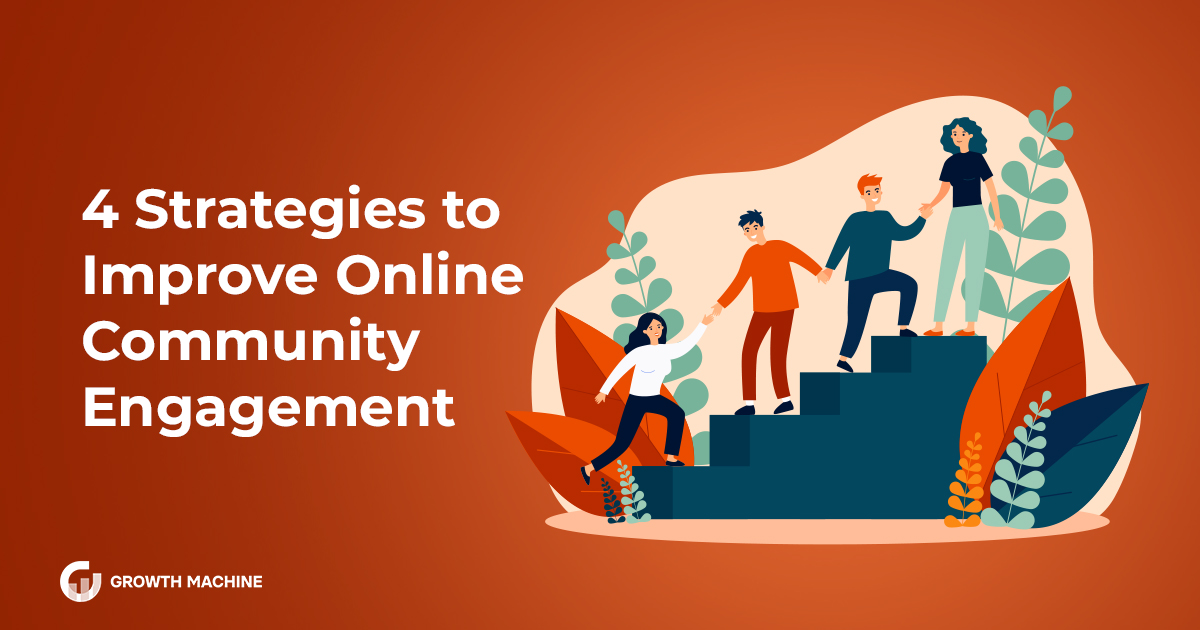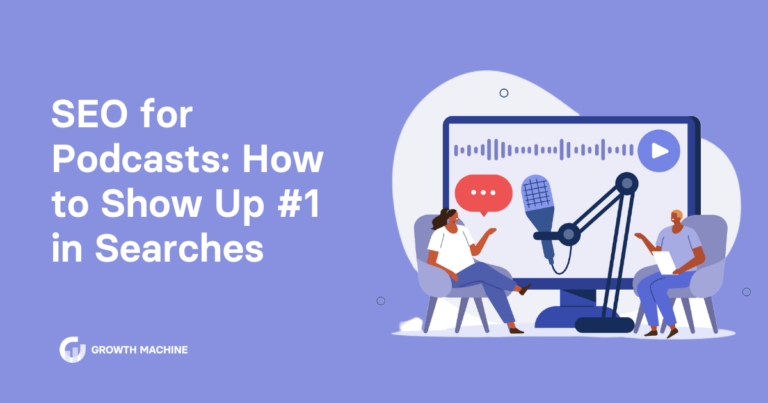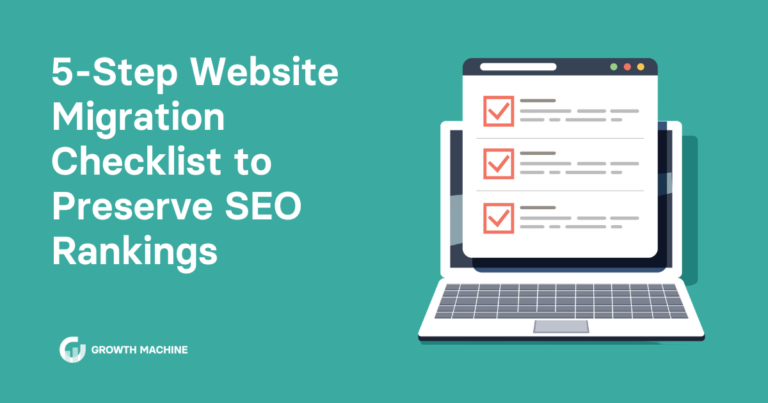4 Strategies to Improve Online Community Engagement
As marketers, it’s easy to get lost in growth metrics without ever pausing to ask the question, “Is my community actually engaged?”
Community growth and community engagement are two very different things. Algorithms, self-promotion by members, and sheer time can cause a community to grow — but that doesn’t mean members are engaged. Meanwhile, a tight-knit community with seemingly unimpressive growth might spark real conversations that educate, inspire, and excite its member base.
Christina Pashialis started the ContentUK community with just seven members. One year later, Christina’s community engagement allowed her to monetize ContentUK and ultimately leave her full-time job. On a recent episode of the Growth Machine Marketing podcast, Christina shared strategies to spark community engagement and foster real connections between its members. We’ll take you through them one at a time.
1. Choosing a Platform: Meet Members Where They Are
When you start a community, one of the first decisions — if not the first — is where to build it. Online communities exist within Facebook groups, Discord, Circle, and Teachable, making that initial choice difficult to narrow down.
Our advice? Meet your members where they are. Where do they already hang out (both online and in person)? Which channels are they familiar with?
To gather content marketers together, Christina chose a channel anyone could bond over: booze. She arranged a casual meetup at a local pub, blasted the time, date, and other details over Twitter, where she had amassed a following.
When the time came to switch to a virtual format, she chose Slack — mainly because that’s where Christina, a content marketer herself, hung out. To date, Christina has joined four communities and 20+ Slack groups to engage with, learn from, and collaborate with other marketers and solopreneurs. Find out where “your people” exist online, and choose that platform to build your community.
In our Growth Machine community, our Head of Marketing, Amanda Natividad, finds podcast guests through Twitter and Slack because that’s where other content marketers build their platforms. She organizes potential guests in Twitter lists, is active in a number of Slack communities, and is even in the marketing Swipe Files community (owned by Corey Haines, a previous podcast guest).
2. Sharing Content: Rethink Your Conversations
When deciding how to publish and distribute content, rethink which channels would be most useful to your community. How do these community members best absorb new information? Are they a headphones-in, listen-in on the morning commute type of group? If so, an audio file — such as webinar recordings or podcasts — might be best. Do they prefer to learn by doing? Then perhaps you should host an interactive workshop or offer downloadable freebies like checklists and worksheets.
Christina felt she drove the most community engagement through webinars, as presenters could field questions from the community. Hosting webinars served a dual purpose: Not only did it spike engagement from her community, but it also allowed her to easily repurpose content. She took notes on commonly asked questions in each webinar, then published the content in social media snippets and within a members-only area.
You might find that publishing content through multiple channels is the best way to serve your audience. At Growth Machine, we share content through social media, blog posts, our podcast, and free email courses. Recently, we even started reading blog posts out loud as mini-episodes on our podcast. While we understand most content marketers love to read, we also know hectic jobs can make it difficult to sit down and scan through 1,200 words. Creating an audio version makes it easier for our community to absorb the information (and multitask as they listen!).
3. One-to-One Connections: Do Things That Don’t Scale
Here’s a lesson that’s all-too-easy to forget: Number of members does not translate to community engagement.
When building a community, it’s easy to focus on the sheer growth of your member base rather than personal connections. As a community leader, it’s up to you to not stray too far from those unique, personal connections that made your community special in the first place.
When Christina started with her seven-member pub crawl, it was easy to be on a first-name basis with her entire community. As ContentUK grew, Christina would take time to have 1:1 calls with new members. Today, she keeps an Airtable sheet going of all ContentUK members, noting their background and topics of interest. As conversations arise in the Slack channel, she tags relevant people to ensure a high-quality conversation, which ultimately drives engagement and promotes inclusivity.
As you grow your community, you may need to invest in additional resources to help keep members engaged. Community moderators (both paid and volunteer) can help spur conversations and drive real connections. While these 1:1 efforts may seem expensive and time-consuming, it’s well worth it to build an authentic community base.
At Growth Machine, we always encourage clients to respond to every single comment — both in social media and after blog posts. Responding to individual questions and comments proves you’re just as engaged as your audience (plus, you never know when a single response could benefit the whole community).
4. Tracking Success: Keep an Eye on Analytics
Instincts are not data — and you should never base a decision on a guess.
To better understand community engagement, analyze your metrics. The sheer number of members you have doesn’t always translate to engagement. Instead, track community engagement by asking the following questions:
- What’s the average lifespan of each member? Do they stick around for weeks, months, or years?
- How many repeat interactions do you have with members? Do they attend one webinar and then never return, or do they come back for future events?
- How many responses does each comment get? How many comments does the average member make over the course of a week or month?
- What’s your churn rate? Do you know why people leave your community?
How you track success will depend on how (and where) your community is set up. While it can be difficult to track engagement, we encourage Growth Machine clients to start with their Google Analytics.
After a client publishes a new content strategy, we don’t just look at the number of visits per month but also the length of those visits. If visitors are spending 4-5 minutes on each web page, we know they’re engaged with the content (probably reading a single blog post from start to finish). In addition, we look to see how many pages each visitor browses before exiting the site. If they were drawn to several blog posts before leaving the site, we know a number of articles piqued their interest.
Is It the Right Time for Your Brand To Build a Community?
If there is one thing we learned from Christina, it’s this: The size of your member base doesn’t translate to engagement. Even a small group of 5-7 people can gather together to learn from one another and forge new relationships. In fact, Christina would argue that the more niche your service, offering, or interests, the more valuable it would be to build a community.
You can never sacrifice 1:1 connections for the sake of sheer growth. And if you want to connect with us, you can always find us on Twitter at @growthmachine__ or on LinkedIn.







